With 20 years'development, Haomei has grown into a top aluminium alloy manufacturers and suppliers. We have comprehensive kinds of aluminium sheets, aluminum coil, aluminum strip, aluminum foil, aluminum discs, aluminum tread plate, color coated aluminum and CTP plates, covering series-1, series-3,series-5, series-6 and series-8. You can realize one-stop purchase in Haomei.
Aluminum Sheet Coil Factory Visit
Super Hard 2024 Aluminum Strip
What is 2024 aluminum alloy
2024 aluminum alloy is a kind of high-strength duraluminum, which belongs to the Al-Cu-Mg series. It is mainly used to make various high-load parts and components. It can be strengthened by heat treatment and has medium plasticity in the quenched and just-quenched state. The corrosion resistance is not high, and anodizing treatment and painting methods are often used to improve its corrosion resistance.
It is mainly used to make various high-load parts and components (but not including stamping forgings), such as air frame, skin, ribs, spars, rivets and other working parts below 150 °C on aircraft.
2024 aluminum stripe chemical composition
Alloy | Si | Fe | Cu | Mn | Mg | Cr | Zn | Ti | Other | Al | |
each | total | ||||||||||
2024 | 0.5 | 0.5 | 3.8-4.9 | 0.3-0.9 | 1.2-1.8 | 0.10 | 0.25 | 0.15 | 0.05 | 0.15 | Remainder |
Physical properties
Alloy | Tensile strength Rm/Mpa | Yield Strength Rp0.2/Mpa | Elongation % | Hardness/HBWα | Density (20°C) (g/cm3) |
2024-t4 | 425 | 275 | 14 | 120 | 2.8 |
Main tempers
2024 aluminum strip can be produced in an annealed condition as well as various tempers – T3, T4, and T8. Some of the most common available tempers of this alloy are 2024-T351, 2024-T851, 2024-T6, 2024-T4, 2024-T3, 2024-O.
Alloy-temper | Tensile strength(ksi) | Yield strength(ksi) | Elongation(%) |
2024-O | 17 | 11 | 18 |
2024-T3 | 70 | 50 | 16 |
2024-T4 | 68 | 47 | 20 |
Application
1. Aircraft structure (skin, frame, rib beam, bulkhead, etc.)
2. Boat
3. Cruise missile prefabricated components
4. Truck wheel
5. Aircraft propeller components and various other parts
6. Aircraft siding
7. Beauty equipment
8. Notebook case
9. Gears
10. Cylinders
11. Pistons
Original source: https://www.aluminumstrip24.com/products/2024-aluminum-strip.html
Typical Aircraft Aluminum Sheet 2024
High-strength aircraft aluminum sheets are of low density, high strength, and good thermal processing performance, which have broad application prospects in aerospace components. For example, high-strength aluminum alloy thick plates are used as the main load-bearing components, and the proportion of use accounts for 30% to 35% of the total aluminum consumption in the aircraft.
Aluminum-copper (2000 series) alloys are the predominant aluminum alloys used in airframe structures, where the primary design criterion is damage tolerance. Compared with other series of aluminum alloys, 2000 Al-Cu alloys have higher strength, higher damage tolerance and good fatigue crack growth resistance due to the precipitation of Al2Cu and Al2CuMg phases. 2024 are the typical grade.

2024 aluminum is a typical hard aluminum alloy with good comprehensive performance. It has high compressive strength, certain temperature resistance, and can be used as working parts below 150 degrees. After heat treatment, the 2024 aluminum alloy has undergone solid solution treatment to obtain relatively high compressive strength and ductility. It is generally used to produce skins, roof beams, bulkheads, and wings of airplanes.
The compressive strength of 2024 aluminum sheet is higher than that of 7075 aluminum sheet. The forming properties are better in the thermal condition, quenching and new heat treatment conditions, and the heat treatment process enhancement effect is remarkable, but the heat treatment method is strictly specified. Its corrosion resistance is weak, but it can be reasonably maintained by cladding with pure aluminum.
2024-T3 is one of the most widely used alloys in airframe construction. It has moderate yield strength, very good resistance to fatigue crack growth and good fracture toughness. 2024 aluminum sheet remains an important aircraft structural material due to its excellent damage tolerance and high resistance to fatigue crack growth under T3 aging conditions. Welcome to leave message below to inquire 2024 aluminum sheet price.
6016 Automotive Aluminum Sheet
The automotive aluminum sheets can be classified into 5000 series, 6000 series and 7000 series in terms of alloy composition. 5754, 5182, 5023 are used for inner covering parts and structural parts; 6016 aluminum, 6014, 6022, 6111 are used for outer covering parts.
6000 aluminum alloys are currently the most widely used aluminum alloys for automobile sheet metal parts in the automobile industry. They have excellent formability, high strength performance, corrosion resistance, hemming performance, high surface performance, etc. At the same time, after painting and baking, the strength performance has been improved to a certain extent.

6009, 6010 and 6016 aluminum alloys are currently used in the outer and inner panels of automobile bodies due to their good plasticity and the artificial aging that can be achieved in the process of painting and baking after forming to obtain higher strength.
6016 aluminum sheet is used in the outer panel of the car door, which can meet the dent resistance design requirements by increasing the thickness of the sheet and optimizing the structure. Under the premise of meeting the rigidity, strength design requirements and relevant collision regulations, AA6016 aluminum alloy plates can be widely used to replace traditional steel plates in the outer panels of automobile doors, so that the weight can be reduced by more than 40%, and the purpose of lightweight can be achieved.
The 6061 alloy reaches medium strength after special treatment (T6), and its strength is higher than that of the 5 series alloys. Moderate strength is very suitable for the automotive industry. The aluminum alloy sheet used for different parts of the automobile body is also different. Among them, the 6061 aluminum sheet is used for the car fender, outer hood panel and car door.
The 6016 aluminum sheet can meet the vehicle manufacturing requirements after the solid solution-T4P-baking paint treatment, but the process parameters have a great influence on the final performance.
Insufficient solution treatment reduces the precipitation power of T4P and artificial aging during the baking process. Long holding time may lead to grain coarsening. Low pre-aging humidity will reduce the performance stability of the plate during placement and the hardening effect during the baking process.
If the temperature is too high, it will affect the formability of the stamping process. It can be seen that the solid solution and T4P process parameters should be optimized in order to obtain ideal comprehensive properties.
Original source: https://www.aluminium-auto-sheet.com/a/6016-automotive-aluminum-sheet.html
5356 Filler Rod Aluminum Wire Price
The most widely used aluminum welding wires for welding are 4043 and er5356.
SAL4043, commonly known as ALSil, is an aluminum filler metal containing 5 percent silicon and can be recommended for welding 3003, 3004, 5052, 6061, 6063 and casting metals 355, 356 and 214. The melting point temperature range of ER4043 is 1065-1170oF, the color after anodizing is off-white, and the tensile strength is as low as 186MP.
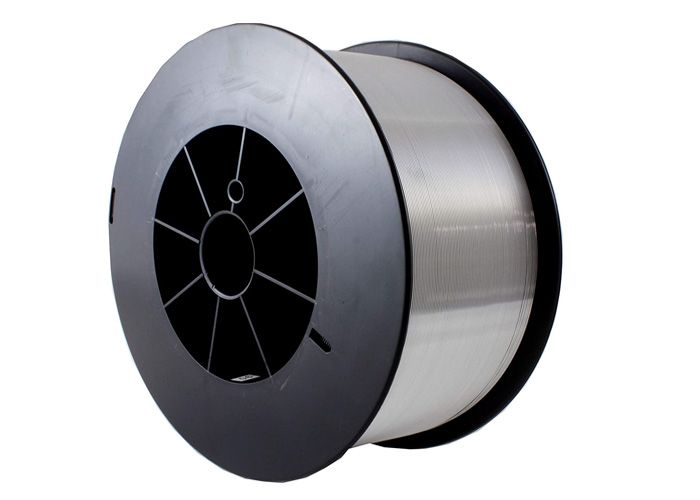
Performance characteristics: It is a kind of aluminum-silicon alloy welding wire with great versatility. The weld metal has excellent thermal crack resistance and can also guarantee certain mechanical properties. However, in the case of anodizing treatment, the color of the weld metal and the base metal Differently, the welding of aluminum-magnesium-gold produces brittle Mg2Si in the weld, which reduces the plasticity and corrosion resistance of the joint.
Uses: Commonly used as filler material for argon arc welding and oxygen-acetylene gas welding of aluminum alloy workpieces and castings other than aluminum-magnesium alloys, especially for heat-treated aluminum alloys that are prone to thermal cracks, and can obtain better results.
SAL5356 is usually used as ALMg5, which is an aluminum alloy filler metal containing 5% magnesium. It can be used for MIG or TIG welding. It has good seawater corrosion resistance and can generally be applied to base metals 5050, 5052, 5083 , 5356, 5454 and 5456 welding. It is white in color after anodizing and has a tensile strength of 290MP.
Performance characteristics: This product is an alloy welding wire containing 5% magnesium. It is a general-purpose welding material with a wide range of uses. It is suitable for welding or surface surfacing welding of cast and forged aluminum alloys with 5% magnesium. It has high strength and can Good forgeability and good corrosion resistance. This product also provides good color matching for anodized welds.
Uses: bicycles, aluminum scooters and other sports equipment, locomotive carriages, chemical pressure vessels, ordnance production, shipbuilding, aviation and other industries.
Attention should be paid to the selection of aluminum welding wire:
1) Crack sensitivity of welded joints
The direct factor affecting crack sensitivity is the matching of base metal and welding wire. The weld metal with a melting temperature lower than that of the base metal can be selected to reduce the crack sensitivity of the weld metal and the heat-affected zone. For example, when welding 6061 alloy with a silicon content of 0.6%, the same alloy is used as the weld, and the crack sensitivity is very high.
However, ER4043 welding wire with 5% silicon content has good crack resistance because its melting temperature is lower than that of 6061 alloy and it has higher plasticity during cooling. In addition, the weld metal avoids the combination of magnesium and copper because of the high crack susceptibility of Al-Mg-Cu.
2) Mechanical properties of welded joints
The strength of industrial pure aluminum is the lowest, the 4000 series aluminum alloy is in the middle, and the 5000 series aluminum alloy has the highest strength. Although aluminum-silicon welding wire has high crack resistance, the plasticity of silicon-containing welding wire is poor. Therefore, silicon-containing welding wire should be avoided for joints that require plastic deformation after welding.
3) Performance of welded joints
In addition to the composition of the base metal, the choice of filler metal is also related to the geometry of the joint, the corrosion resistance requirements during operation, and the appearance requirements of the weldment. For example, welded containers for storing hydrogen peroxide require high-purity aluminum alloys in order to provide good corrosion resistance to the container or to prevent contamination of it by the stored product. In this case, the filler metal must be at least as pure as the parent metal.
Generally speaking, ER4043 and er5356 mig wire are the most widely used aluminum alloy welding wires in aluminum alloy welding. We can choose more suitable welding wire according to the application requirements after welding.
Original source:https://www.marine-aluminium-plate.com/a/5356-filler-rod-aluminum-wire-price.html
A Better Choice: 5182 Aluminum Sheet for Fuel Tank
The 5000 series aluminum alloy has as good corrosion resistance and weldability. The tank body made of aluminum alloy can transport various liquids or liquefied gas without any protective coating inside, and because there is no corrosion, the oil quality is guaranteed.
Aluminum alloy has good electrical conductivity and rarely accumulates static electricity on the tank body, so sparks will not be generated and cause explosions, and aluminum alloy can well absorb the instantaneous capacity generated by the tank body when it collides.
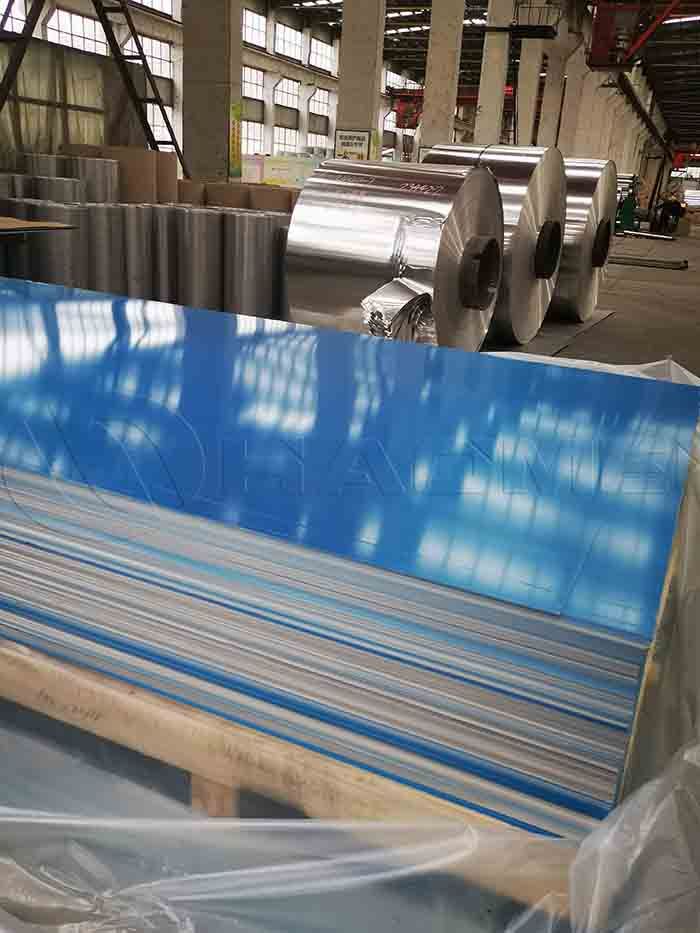
5083, 5754, 5454, 5059 and 5182 aluminium sheet are a common choice for making oil tankers and other chemical transport vehicles. They have the characteristics of large size, medium strength, high-quality surface, high formability, and has good corrosion resistance and welding performance, and recyclability. The toughness and strength of 5083-H321 aluminum alloy will increase at low temperature, which is very suitable for use in storage tanks of liquefied natural gas (LNG) in transport ships.
5182 aluminum plate for oil tanker is the latest high-magnesium alloy tanker specially designed for European dangerous goods road transport agreement in recent years. Its tensile strength and elongation are relatively high. When 5182 aluminum alloy is used for welding, the mechanical properties in welding can reach the minimum values specified for the base metal. The excellent quality of the 5182 alloy plate improves the safety of the aluminum alloy tanker.
What is the temperature 5182 aluminum alloy tank truck can undertake? It can withstand temperature up to 560 degrees Celsius. However, when the temperature exceeds 550 degrees Celsius, the tanker will basically become very brittle, soft, deformed, and have no bearing pressure.
Special requirements for aluminum alloy tank trucks
1. Process requirements
In addition to solving the requirements of special workshops, equipment, skilled personnel, supply of aluminum alloy materials and production technology, the production of aluminum alloy tank cars also requires a large amount of capital investment, especially the introduction of new production and processing technology for aluminum alloy tank cars.
2. Material requirements
At present, most manufacturers mainly use 5083 aluminum alloy plate as the material of the tank body, but the use of 5182 alloy can better reflect its corrosion resistance and welding performance, and under the same loading quality, the wall thickness of the tank body can be thinner and the weight is lighter.
Original source: https://www.aluminium-tanker-plate.com/a/a-better-choice-5182-aluminum-sheet-for-fuel-tank.html
Where to Buy Cigarette Packing Aluminum Foil
The use of aluminum in the tobacco packaging industry is mainly the aluminum foil for the cigarette inner packaging. The cigarette packing aluminum foil can better prevent moisture and mildew, and keep dryness and taste. The thickness of the aluminum foil is 0.006mm to 0.007mm. Generally, aluminum foil with a thickness of 0.006mm is used. The temper is soft and has good extensibility.
Aluminum foil has very good protective properties. Aluminum foil paper cigarette boxes hardly absorb any aroma substances. Other materials such as metallized (coated) paper or printed paper cannot achieve similar quality and ability to protect aroma. In addition, aluminum foil paper used as the inner lining paper of cigarette packaging has good fluidity on the packaging machine, and can maintain high production efficiency.
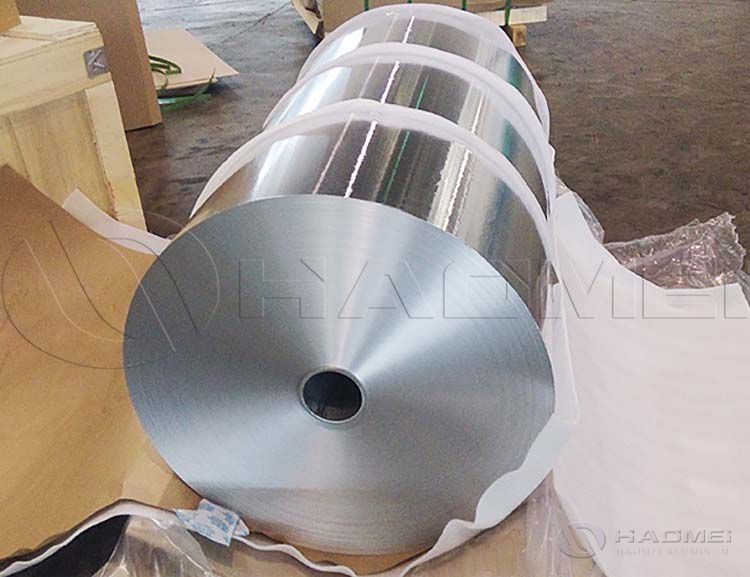
1235 aluminum foil is a main kind of cigarette aluminum foil papers. Its aluminum content is not less than 99.35%. It has good anti-rust properties, formability, and weldability. It is also of few pinholes, low cost, good shape and stable chemical properties.
The alloy composition of 1235 aluminum foil and 8011 aluminum foil is different. The difference in process lies in the annealing temperature. The annealing temperature of 1235 aluminum foil is lower than that of 8011 aluminum foil, but the annealing time is basically the same. The tensile strength of 8011 aluminum foil is higher than that of 1235 aluminum foil. At the same time, the elongation of 8011 aluminum foil is not much different from that of 1235 aluminum foil, but slightly higher.
At present, the domestic production of 6~7μm light gauge aluminum foil generally uses 1235 aluminum, while European and American manufacturers generally use AA8079 alloy. Compared with AA1235 alloy, AA8079 alloy has higher content of Fe and Si, which has higher mechanical properties and higher production efficiency.
Difficult control of thickness error is a feature of aluminum foil rolling. The thickness difference of 3% is not difficult to control in the production of plates and strips, but it is more difficult to control in the production of aluminum foil.
As the thickness of the aluminum foil is thinned, many micro-conditions can be affected, such as temperature, oil film, oil and gas concentration, etc. The only way to adjust the thickness of aluminum foil is tension and speed. These factors have all caused the difficulty in thickness control of aluminum foil rolling.
Haomei Aluminum has mature processing technology,which can ensure fully meets your requirements. Welcome to leave message below to inquire aluminum foil jumbo roll price.
original source: https://www.alumfoils.com/a/where-to-buy-cigarette-packing-aluminum-foil.html
Dural 30mm Aluminum Sheet for Aircraft
More than 90% of the thick aircraft aluminium sheets are produced by heat-treatable aluminum alloys (2XXX, 6XXX, 7XXX, and a small amount of 8XXX series alloys), while about 85% of the aluminum alloy thick plates used in other industries are produced by heat treatment non-strengthenable aluminum alloys (1XXX, 3XXX, 5XXX, some 8XXX series alloys).
Among the aluminum thick plates used in aerospace, the thickness ≤ 75mm accounts for about 95%, the width is not more than 3600mm, and the length is not more than 32.5m. 30mm aluminium plate is a common thickness.
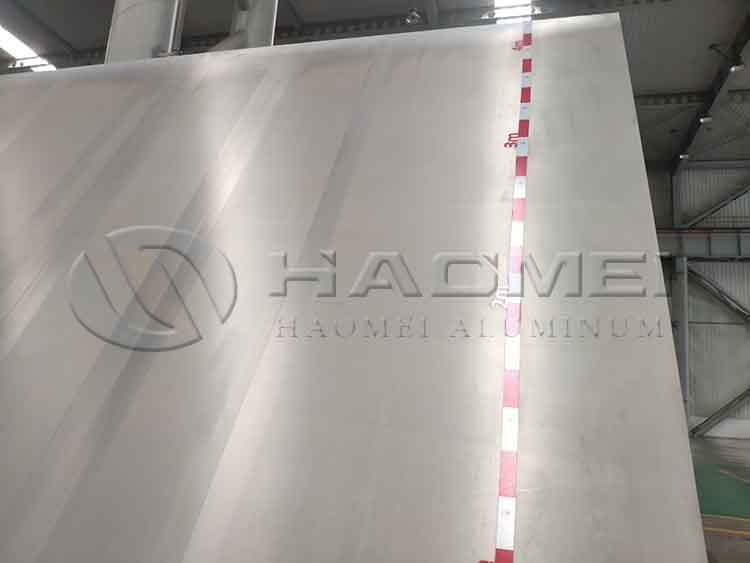
Commonly used aerospace aluminum alloys
Medium-strength aluminum alloys: 2xxx series and Al-Mg-Li alloys in aluminum-lithium alloys.
Dural aluminum alloys: 7xxx series and Al-Cu-Li series, Al-Cu-Li-Mg series alloys in aluminum-lithium alloys.
Corrosion-resistant aluminum alloys: 5xxx and 3xxx aluminum alloys
7xxx dural aluminum alloys are used to manufacture aircraft structures and other high-stress structural parts that require high strength and strong corrosion resistance, such as upper and lower wing panels, purlins, and bulkheads.
After solution treatment, the plasticity is good, and the heat treatment strengthening effect is particularly good. It has high strength below 150°C, and has particularly good low-temperature strength, poor welding performance, and tends to stress corrosion cracking..
Aluminum alloy thick plates must be produced by ingot hot-rolling method (including Hazelett continuous casting and rolling method). The thick plate production capacity does not refer to the production capacity of the hot rolling mill, but the production capacity of the rear finishing equipment (solution treatment furnace, aging furnace, pre-stretching machine, ultrasonic probe production line, etc.)
Modern roller hearth solution treatment furnaces, pre-stretchers and ultrasonic flaw detectors are a must for the production of high-quality aerospace aluminum alloys. As one of the aircraft metal suppliers in China, we have them.
Some components of the aircraft wing are made of 2XXX and 7XXX dural aluminum alloy thick plates. The longest length of the required plate is about 38m, and the widest width is about 4100mm. Therefore, the maximum width of the rolls of the hot rolling mill can reach 4300mm, and the maximum length of the hearth of the roller hearth solution treatment can reach 40m, which can meet the needs of the aviation industry for aluminum alloy thick plates.
Original Source:https://www.aircraftaluminium.com/a/dural-30mm-aluminum-sheet-for-aircraft.html
Marine Aluminum Grade 5083 and 5086
The high toughness, corrosion resistance and weldability of marine aluminum sheets provide a good choice for the construction of ships with strict weight requirements, coupled with the low processing cost of aluminum and the outstanding physical properties of aluminum alloy, making aluminum alloy ships are very economical. The two common choices are 5083 and 5086 aluminum.
What are the aluminium 5083 properties? It is a typical alloy in the Al-Mg series. It cannot be strengthened by heat treatment, and has the characteristics of medium strength, good corrosion resistance, weldability, and easy processing and forming. Many foreign speedboats are built with 5083 aluminum alloy. Mg plays the main strengthening role in the 5083 alloy. The main strengthening phase of the alloy is (Mg5Al8) phase, and Mg has a certain solid solution strengthening effect. As the Mg content increases, the strengthening phase in the alloy also increases. Because the strengthening phase is bone-like in the eutectic structure and has a high hardness. The increase of the strengthening phase leads to an increase in the strength of the alloy.
In the environment of different marine zones on an island reef, the corrosion rate of 5083 aluminum alloy is in order from large to small: full immersion area, tidal range area, and atmospheric area. The corrosion form of 5083 aluminum alloy in different marine environments of an island reef is dominated by local corrosion. The maximum pitting depth of the sample in the atmospheric region is the largest, and the maximum pitting depth of the sample in the tidal range region is the smallest.
Generally speaking, the 5086-h112, 5086-h32, 5086-h321 and 5086-h116 aluminum sheet are often used. It is an also a typical 5xxx Al-Mg alloy. The magnesium content generally does not exceed 7%. With the increase of the magnesium content, the strength of the alloy will increase, and the plasticity will decrease. 5086 aluminum sheet is usually used in the annealed state, cold hardened or semi-cold hardened state.
From 1966 to 1971, the United States built 14 "Ashville" class high-speed gunboats. The main deck and bottom plate were made of 12.7mm thick 5086-H32 aluminum alloy, and the profiles were made of 5086-H112 aluminum alloy. In addition, 5052 alloy aluminum plate and 5454 aluminum alloy are also used for decks and so on. Haomei Aluminum has all the main marine grade aluminium sheets with certification. Welcome to leave message below to inquire what you need.
Original Source:https://www.marinealu.com/a/marine-aluminum-grade-5083-and-5086.html
Al 5754 5182 for Automotive Panels
The automotive aluminum sheet is widely used in the field of transportation due to its high strength, good extrudability, good weldability, and good corrosion resistance. It is especially suitable for car body and car frame.
The use of aluminum alloy as the raw material for the production of vehicles can reduce the weight of the vehicle and help to improve the speed. The reduced weight of the vehicle is also conducive to saving energy consumption. In addition, aluminum alloy has excellent corrosion resistance, it can also prolong the service life when used in the manufacture of the cars.
5xxx Al-Mg is currently the most widely used alloy series, with high cost performance, excellent processability and weldability. The typical alloy grades are Al 5182, 5052, 5083, 5754,etc. What are their uses in the automobile manufacturing?
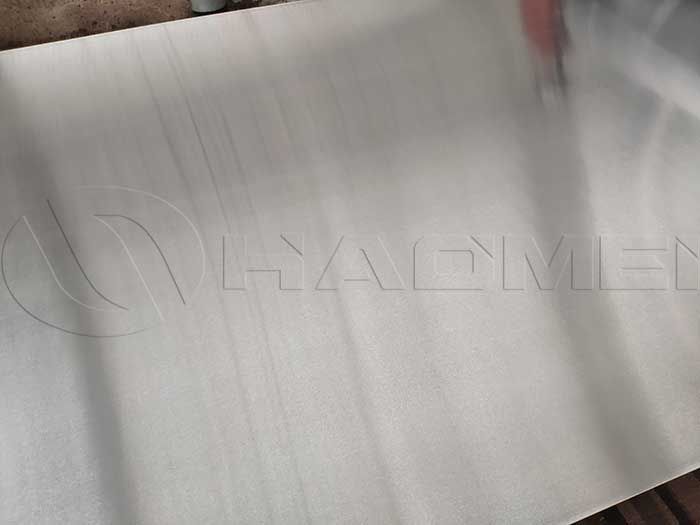
Aluminum 5182 has good superplasticity, deep drawing performance and tensile strength. It is a good choice for making complex automotive inner panels. Due to its good forming properties and elongation, it has wide applications in automotive body panels.
In the production of aluminum alloy, it is necessary to make a reasonable choice of quenching process. Different quenching processes have different effects on the production of aluminum alloy sheets. The quenching process is mainly selected according to the aluminum alloy variety to ensure the effective implementation of the process. For example, in the production process of the 5182 alloy plate of the Audi A8 sedan, the air quenching process is usually selected to complete.
The 5754 aluminum alloy continuously forms yield microdomains during the stretching process, and the yield microdomains present uneven features. Such inhomogeneity is not conducive to the aesthetics of the aluminum alloy for automobiles.Especially after the aluminum alloy surface is painted, obvious defects will appear and affect the appearance.
Therefore, the 5754 aluminum alloy is only suitable for manufacturing the inner panel material of the automobile body, but not suitable for manufacturing the outer surface covering parts of the automobile body.
At present, there are many domestic researches on the box-type annealing process of 5754 aluminum alloy (long holding time). The performance difference of materials is explored under different heat treatment processes. Al 5754 h22, h32 and O temper are produced according to the research results.
There is the mainstream automotive sheet production process: semi-continuous casting (direct chill casting, DC) to produce large-size slabs → sawing head and tail → sharpening surface → heating → high-temperature rolling in large wide-width hot rolling mills → coil → cold rolling to the thickness of the finished product → heat treatment with an air-cushion continuous heat treatment furnace of special heat treatment equipment for automotive panels. If it is necessary to control the microstructure and grain size of the material, an intermediate annealing process can be added in the cold rolling pass.
Original Source:https://www.autoaluminumsheet.com/a/al-5754-5182-for-automotive-panels.html
AA 5083 and 5059 Aluminum Tanker Plate
Energy saving, emission reduction and structural lightweight have become a global trend. Compared with steel, aluminum alloy tank trucks have the characteristics of low density, good corrosion resistance, easy welding, long service life, easy recycling, reduced emissions, and no charge accumulation. In recent years, the use of aluminum and its alloys in the automotive industry has become more and more widespread. The alloys of aluminum plate for tankers are usually AA5083 and 5059 aluminum sheet.
5083 aluminum alloy is an aluminum alloy containing magnesium and trace amounts of manganese and chromium. It is highly resistant to seawater and industrial chemicals. The cylinder body of the oil tanker is welded with 5083 alloy, and the plate thickness is 5mm~6mm. The baffles and bulkhead also adopts this alloy. The wall thickness of the head is equal to or greater than that of the tank body, and the thickness of the baffle and bulkhead is 1mm thinner than that of the tank body.
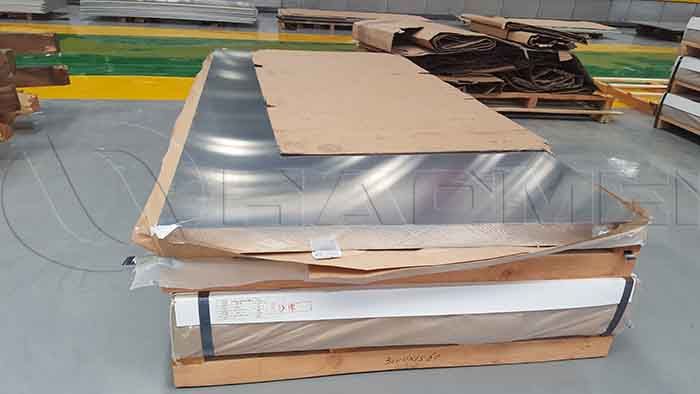
Both the 5754 aluminum plate and the 5083 aluminum plate belong to the aluminum-magnesium alloy. The main difference between the two is the magnesium alloy content, hardness and elongation. The magnesium alloy content of the 5754 aluminum plate is around 3%, and the magnesium alloy content of the 5083 aluminum plate is as high as around 4.5%. , At the same time, the hardness of 5083 aluminum plate is higher than that of 5754 aluminum plate. Of course 5083 aluminum plate price is also higher than 5754 aluminum sheet.
5059 aluminium sheet belongs to 5xxx Al-Mg aluminum sheet, which has high strength, high plasticity and corrosion resistance, good weldability, and low crack tendency. With its unique advantages, it is widely used in special tank trucks for petrochemical and other dangerous goods.
The corrosion resistance of 5059 alloy is better than that of 5083 alloy. The surface structure of 5083 alloy is partially recrystallized structure and deformed fibrous structure, and the precipitates are continuously distributed in the grain boundary, which is not conducive to the corrosion resistance of the alloy. The Zn content of the 5059 alloy is relatively high, the surface structure is a completely recrystallized structure, and the precipitates are uniformly dispersed and intermittently distributed, which is beneficial to the corrosion resistance of the alloy.
The optimal homogenization heat treatment process for 5059 aluminum sheet is 460℃×24 h. As the homogenization temperature of the alloy increases, the second phase with low melting point dissolves rapidly, but at 480°C, an overburned structure appears in the alloy matrix. When the homogenization temperature is 460°C, after holding for 24 hours, the β phase in the original as-cast alloy dissolves back to the matrix to a large extent, and at the same time, the inhomogeneous structure and dendritic network structure are basically eliminated.
Original Source:https://www.aluminumtankerplate.com/a/aa-5083-and-5059-aluminum-tanker-plate.html
What Are 3003 Aluminum Uses
3003 aluminum sheet is a commonly used aluminum-manganese alloy. Due to the manganese alloy elements, this product has excellent anti-rust properties. What are the 3003 aluminum uses?

Lithium batter outer shell
In electric vehicle manufacturing, 3003-H14 aluminum is the main material of its core power battery. 3003 aluminum sheet in the H14 state is more suitable for automatic and semi-automatic punching, and has higher production efficiency.
Bottle cap material
In order to ensure the convenience of printing after the bottle cap is formed, the surface of the bottle cap material is required to be flat, without rolling marks, scratches and stains. Generally, the alloy use is 3003-H16 and the thickness is generally 0.20mm- 0.23mm. The width is 449mm- 796mm. The production of aluminum bottle cap materials can be made by hot rolling or continuous casting and rolling, respectively, and then rolled by cold rolling.
Aluminum insulation coil
At present, there are three kinds of thermal insulation aluminum coils commonly used, namely 1000 series aluminum coil, 3000 series aluminum coil and 5000 series aluminum coil. These three kinds of thermal insulation aluminum coils are widely used in thermal insulation, anti-corrosion and anti-rust projects of buildings, equipment, walls, pipes, etc.
3003 aluminum insulation coil has higher strength than that of the 1000 series aluminum coil and it has better acid and alkali corrosion resistance. It is mostly used for heat preservation of refrigeration equipment, storage tanks, pressure vessels, pipes, and heat sinks.
Food container aluminum foil
The general thickness of aluminum foil food container s between 0.03mm and 0.2mm. It can be divided into two types: wrinkle and wrinkle-free. After cold-rolling or hot-rolling, the aluminum foil jumbo roll with uniform thickness, smooth surface and no peculiar smell is further processed into food container by one-time automatic cold stamping of aluminum foil container machinery and molds. The common chosen alloys are 8011 or 3003 aluminum foil.
Battery Aluminum Foil
The positive electrode is composed of positive electrode current collector, high temperature tape, positive electrode substrate and positive electrode material. The positive current collector is about 0.1mm aluminum foils such as 1070, 1060, 1235, 1230, 1100, 8011, 1N30, 3003, etc. Among them, 1235, 1070, 1100, and 3003 alloys are used more because of their high strength. Haomei Aluminum is a 3003 aluminium sheet factory. Welcome to leave message below to tell us your specification.
Original source: https://www.hm-alu.com/a/what-are-3003-aluminum-uses.html
What Are Advantages of Reflective Aluminum Mirror Sheet
In our daily life, it is not difficult to find the reflective aluminum mirror sheet is widely used in the casing of household appliances, household lamps, wall decoration, cabinets and display cabinets, elevator interiors, luggage nameplates, interior and exterior decoration of cars, photo frames, etc. Although their colors, sizes, and shapes are not consistent, it is undeniable that these have demonstrated the wide range of uses and popularity of the mirror aluminum sheet. What are its advantages?

1. Appearance
Its surface is of high gloss and flatness, and it can present a very good mirror effect when the surface is clean and flat. At the same time, it does not have the disadvantages of being fragile and difficult to clean. It is used for the places with relatively high decorative requirements. It can not only enhance the sense of fashion and expand the sense of space, but also give the product or space a richer visual experience..
2. Performance
Although the mirror aluminum plate has a mirror effect, it still has the advantages of the aluminum plate itself, that is, under the same conditions, the aluminum plate is lighter than most materials. It is of self-cleaning, weather resistance, corrosion resistance, water resistance and moisture resistance.
Especially for some household appliances and cabinet lamps that are destined to be frequently used in humid and high temperature environments such as kitchens, the excellent performance of the mirror finish aluminum sheet can make them have a longer service life, thereby improving the cost performance of the products.
Most importantly, it is precisely because the mirror aluminum plate has the two advantages of outstanding appearance and excellent performance that it can play a greater role under the same conditions.
Three steps to get aluminum mirror sheet
1. Generally, reflective aluminum sheet is got through the mirror roller for continuous rolling process, so that the surface of the aluminum sheet can show the effect of mirror glass. The light reflection rate of the mirror glass is closely related to the hot-rolled strip steel and its extrusion machine, especially the precision of the roller equipment determines the light reflection rate of the mirror aluminum plate.
2. Rolling is a technology used to make the original aluminum sheet flatter. After this process, the material can be stretched and lengthened, and the thickness and length can meet the recommended specifications.
Grinding and polishing is a very important manufacturing stage of mirror aluminum sheet processing. The function of polishing is to grind the original rough and uneven areas on the aluminum sheet to be flat. And because the process is relatively delicate, it will not affect the characteristics of the product itself. If you like to buy mirror finish aluminum sheet, welcome to leave message below directly.
Original source: https://www.alumhm.com/a/what-are-advantages-of-reflective-aluminum-mirror-sheet.html
How Is FSW Aluminium for Shipbuilding Produced #aluminum #shipbuilding
Haomei Aluminum provide wide and extra wide aluminum FSW plate for the superstructure of the ships. It will help you shorten the constructio...

-
With the spread of energy saving and emission reduction concept, lightweight vehicles have been quickly promoted. Aluminum alloy is one of...
-
In the vast world of aluminum alloys, 5052 and 5754 aluminum alloys have become effective materials in many fields due to their unique pro...
-
In the field of food packaging, the packaging of butter is crucial. It not only ensures the quality and freshness of butter, but also attr...